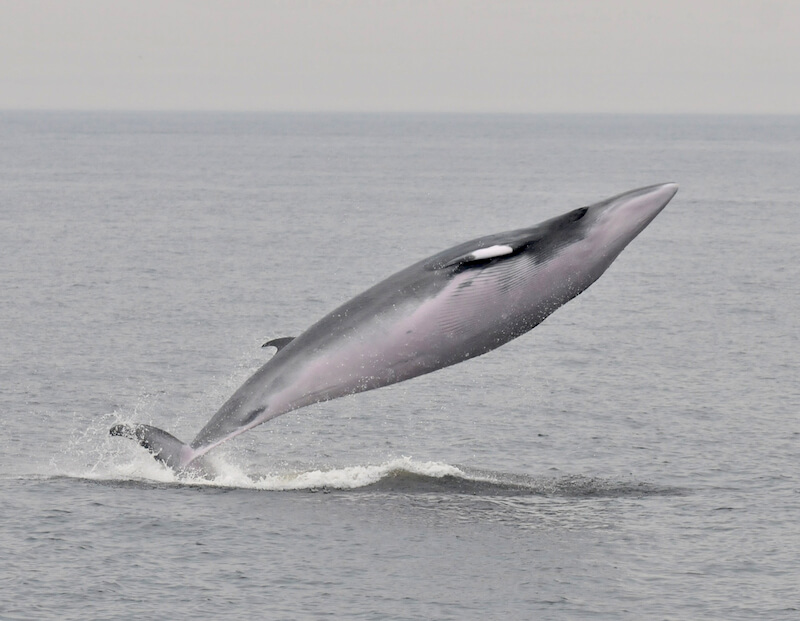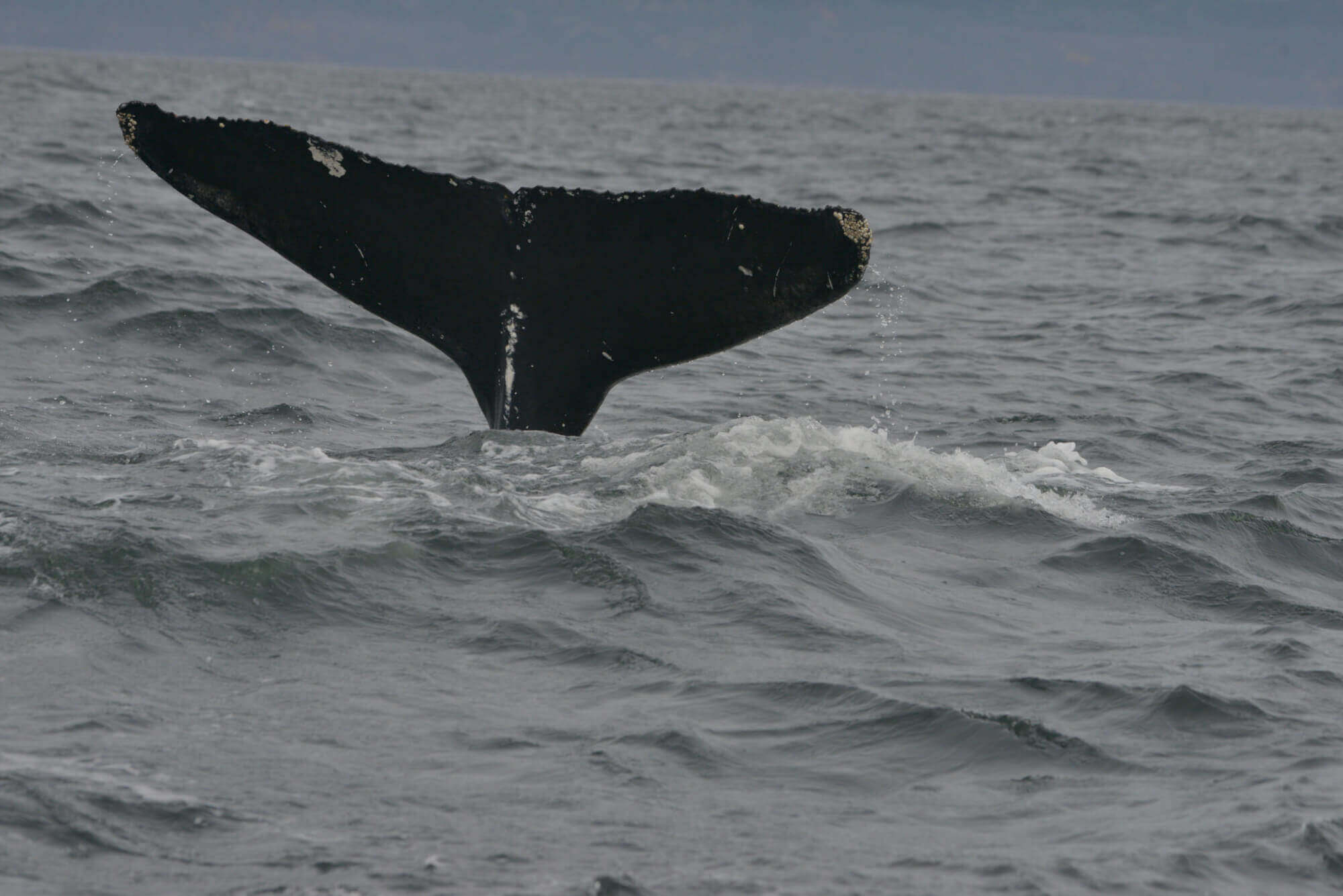While large whales are still mostly absent in the St. Lawrence, minke whales are taking the opportunity to steel the spotlight. They’re everywhere this week, and observers are astounded by their range of behaviours.
On May 16, from aboard the cargo ship Bella Desgagnés , which provides supplies to the isolated communities of the Lower North Shore and Anticosti Island, a crew member spots a minke whale surface feeding in Havre-Saint-Pierre’s eastern entry channel. The next day, another minke whale approaches the vessel between Sept-Îles and Anticosti Island. “It was porpoising in the wake of the ship,” reports the observer. What’s called “porpoising” is a swimming technique where the animal skims the surface; it is generally observed in harbour porpoises, hence the name.
Did this minke whale use the ship’s current for a more relaxing swim, did it hope to seize the opportunity to grab a couple of bites to eat, or was it just enjoying the ripples and eddies created by the passing boat? In any case, it was not the only one to interact with the waves of the boats. On May 19, as the day draws to a close, photographer Renaud Pintiaux is entertained as he watches a minke whale breach several times in the wake of a cargo ship opposite the beach in Les Bergeronnes. Despite their relatively imposing weight (6 to 8 tonnes), the smallest member of the rorqual family is very acrobatic and is able to thrust its body completely out of the water.
On May 20, GREMM’s team is very excited. A minke whales is surface feeding in front of Tadoussac’s Marine Mammal Interpretation Centre, The animal regularly emerges from the water with its mouth agape. Its red throat (due to a rush of blood) contrasts with the dark blue water and the whale’s black flanks. What a show!
More pilot whales!
Some people go to sea just to observe cetaceans. On May 19, René Roy sets sail between Les Méchins and Franquelin. Result: “No large rorquals, but lots of seabirds, a minke whale with a very peculiar jagged ridge, and another group of around twenty pilot whales,” he summarizes. The amateur cetologist wonders whether this is the same group as the one seen 12 days earlier, 24 nautical miles away. After checking with Elizabeth Zwamborn of the Cape Breton Pilot Whales project, this is obviously another group, as evidenced by its different composition.
Off the coast of Sept-Îles, Jacques Gélineau finds a familiar whale: “I nicknamed it “La petite fleur” (“Little Flower”), because of a pattern formed by the barnacle scars on its tail. Since I first spotted it in 2013, this humpback has returned every year and is nearly always one of the first to arrive. Besides this encounter, there are no large spouts to be seen on the horizon.
On the lookout for large whales
“But where are the big whales?” observers wonder, frustrated at not yet having had the opportunity to hear a monumental blue whale blast, witness the long back of a fin whale or catch a glimpse of a humpback tail. “It’s very quiet,” laments one observer. Regulars are drawing comparisons with previous seasons, pointing out that there is usually more action this time of the year, but ultimately admit that every year is different.
Nevertheless, the St. Lawrence is ready! Our collaborators tell us that capelin have been rolling in large numbers in Gallix, Sept-Îles and L’Isle-aux-Coudres. Off the coast of Les Escoumins, boat captains confirm this observation. “Food can be seen everywhere; the waters are teeming with capelin and shrimp. So much so that I saw a plaice come to the surface to feed one night.” Despite everything, so far they have only seen a few herds of belugas crossing off Cap-aux-Oies and minke whales here and there. “Even the seals are all gone, so it’s very quiet!”
In the early morning of May 12, there was action near Anse de la Grosse-Roche, northeast of the tip of Isle aux Coudres . A half dozen belugas are making a ruckus in what appears to be a feeding frenzy. “They were chasing a school of fish, capelin I presume, that were being carried by the flow of the tide,” describes our observer.
This absence of big blasts is frustrating, but not surprising: the whales may be occupied in another rich feeding ground somewhere else. They will have plenty of time to continue gorging themselves in the marine cul-de-sac that the St. Lawrence resembles. On May 13, the National Oceanic and Atmospheric Administration (NOAA) aerial surveillance teams tallied 68 humpback whales, 23 minke whales, 13 fin whales and 3 sei whales off Cape Cod, Massachusetts. The St. Lawrence will be waiting for them to top off their tanks!










